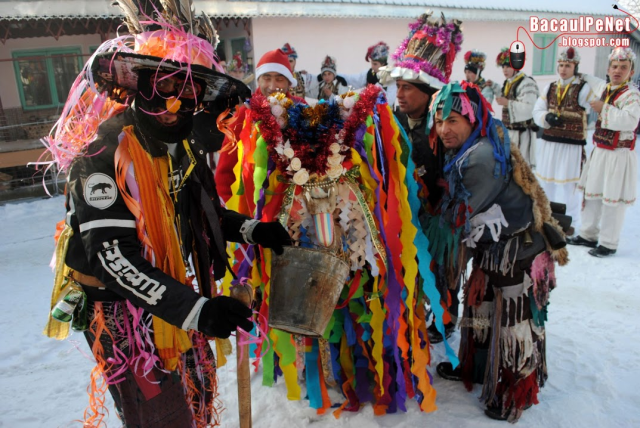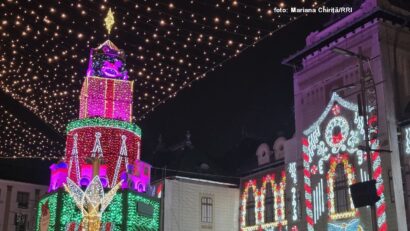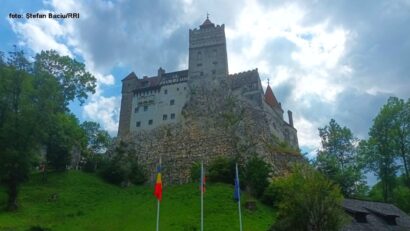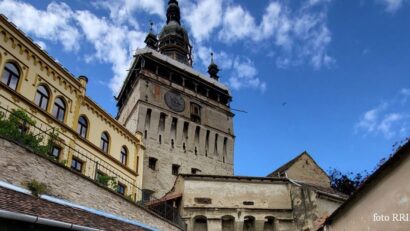New Year celebration in Romania
Pre-Christian rites play a special role in celebrating the transition into the new year

România Internațional, 01.01.2022, 12:15
The coming of the new year is one of the most awaited events in the world. Although for some the calendar date is a mere convention, the New Year is celebrated on all continents. In the Romanian tradition, the New Year used to be called Little Christmas, because all the rites to replace the old time took place in the spring. Although it was believed that the New Year actually begins at Christmas or even earlier, on St. Andrew’s, on November 30, the custom of caroling to announce a new beginning was a must at the end of the year.
Pre-Christian rites play a special role in celebrating the transition into the new year. Given the fact that this moment does not have a religious dimension, the customs have remained almost unchanged over time. An ancient solar cult has passed down to present rituals in which animals are the main element, such as the Dance of the Bear and the Goat. The costumes are prepared the week before Christmas, and the dancers’ masks have the expressiveness of the folk craftspeople who make them with creativity and humor. Delia Suiogan, an ethnologist with the Northern University of Baia Mare explains:
For the New Year, people go caroling to neighbors and friends. The so-called road carols are no longer preserved. On this night, in Maramureș you will be delighted by the beautiful carols, because here, unlike the other areas of the country, the emphasis is on the carol as a song. The people of Maramures know many beautiful Christian carols, but there is still a very rich fund of pre-Christian carols, with many symbols related to the solar system and the rebirth of the sun and nature.
People in rural communities still believe that the night between years facilitates their access to the divine realm. In the folk tradition, the messages given to people at special times over the year, at major holidays, and at time thresholds are considered to be the only truly important ones for both the community and the individual. Sabina Ispas, director of the Constantin Brăiloiu Institute of Ethnography and Folklore in Bucharest has the details:
There is a suite of ceremonial and festive actions, among which Sorcova is very well known, which was practiced especially by younger children. The same goes for the Plough procession, involving both children and adults, married people, with families. The original meaning of the Big Plough was that of protection and sanctification, at the same time, all of which were aspects of the festive celebration of the great feast, from which the carol was derived as a ritual. All that would mark, therefore, the New Year, the whole ceremony ending with the so-called carol of Saint John. These special times, Christmas and New Year, are related to the tradition of opening the heavens. It is, in fact, about the perception, understanding and acceptance of the act of theophany. In all power, the divinity descends upon the earth and the people. That is why it was said that the heavens were opened, because God could communicate directly with his creation, with man. At these special times, when the heavens open, people can find out things that may happen to them during the year that is about to begin. It is not a question of divination, as is believed, but of a message which God conveys to people at a time when he can have direct and close contact with them.
Also on New Year’s Eve, young women used to predict their future. Here is Sabina Ispas again:
There are a lot of ceremonial practices, through which people try to ensure a correct and as complex as possible communication with the divinity. Especially young girls, who want to know if and who they will marry and what that person will be like. They try to decipher the qualities of their future partners, associating the image of hidden things that the girls have to discover. If they discover black ember, the chosen one would be a brunette. If they discover dry branches, it will be a marriage with a person older than them.
For the history of our culture, the period between Christmas and Saint John, on January 7, is one of the richest in such ceremonial and festive actions. Modern society has turned the New Year’s celebration into an occasion of partying with family and friends, in oraganized events that end only at the dawn of the first day of the following year. (MI)






























